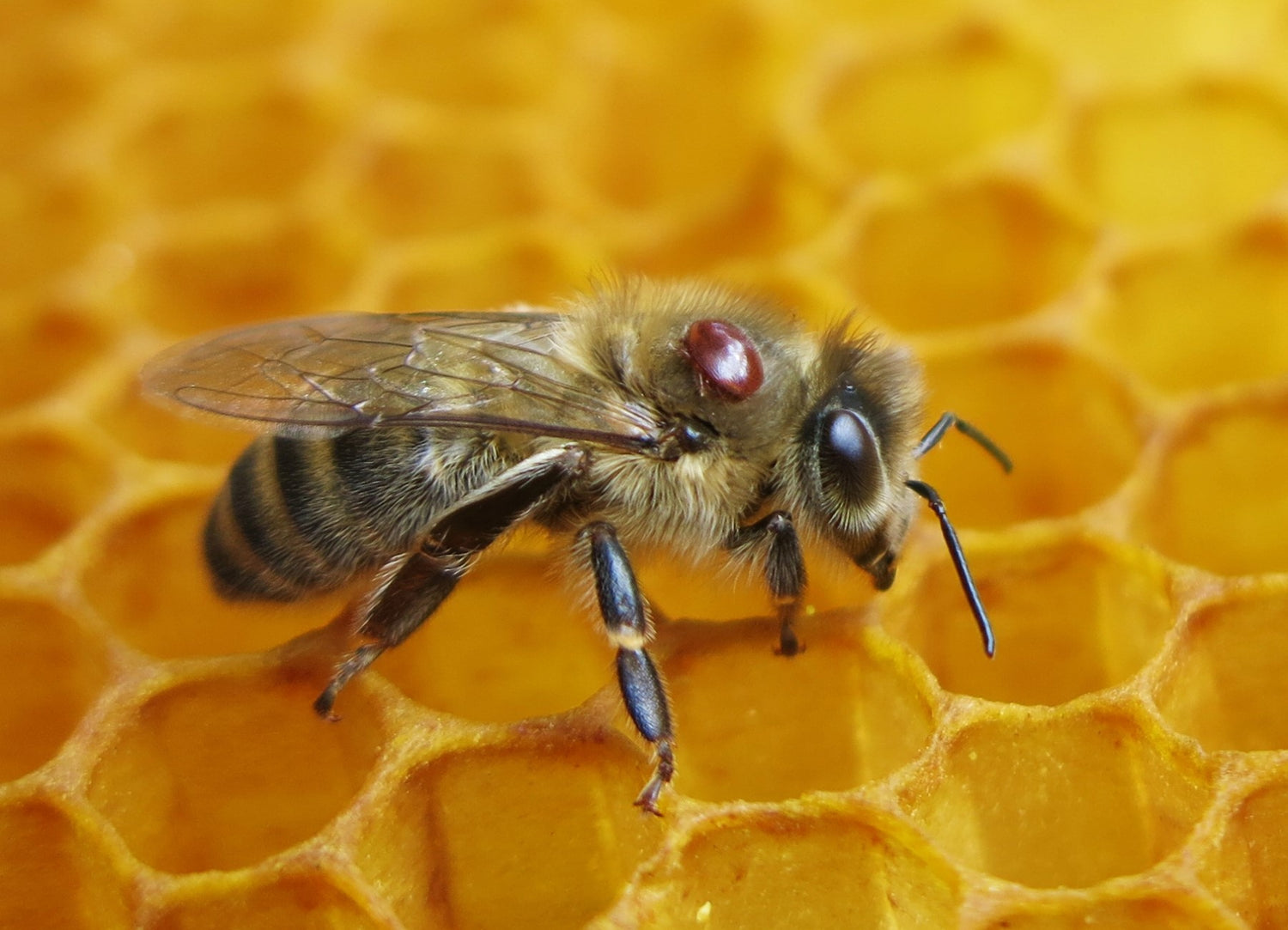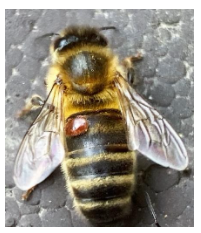Year round treatment program for Varroa mite
Why use a season long Varroa mite management program?
Varroa mite (Varroa destructor) is increasingly becoming an ever-present pest of honeybee colonies across the UK. A short life-cycle gives the mite the potential to reproduce at a rapid rate and there is constant risk of introduction of new mites to a population from bees entering a hive from a different colony. It is therefore essential for the health and productivity of a hive to monitor and manage varroa mite throughout a year.
- Maintain varroa population below a critical level
- Rotating products reduces the risk of development of resistance
Best practice for managing Varroa is an Integrated Pest Management (IPM) strategy combining good husbandry, hygiene and physical measures as well a varroacide treatments when the varroa population reaches an action threshold. The aim of season long varroa management is to maintain the varroa mite population within a colony below an infestation level which causes significant harm to the colony health.
When to use Varroa mite treatments?
Varroa treatments should be carried out when monitoring (e.g. mite fall) passes and action threshold. There is no single ideal time for treatment with varroacides. The choice of varroa treatment should consider varroa population, speed of knockdown and persistence required.
Sustainable season long varroa management.
The aim of a varroa management program is to create a healthy colony going into winter and a strong productive population the following year.

Figure 1: Overview of season long treatment program for Varroa mite control.
A winter treatment with a trickle application of Oxuvar reduces the varroa mite population so that when they start to reproduce in the spring it is starting from a lower level (Figure 2) which will take longer to build up to a population high enough to harm the honeybee colony.

Figure 2: Effect of a winter varroa mite treatment on population growth the following spring.
As the varroa mite population increases through spring towards a critical infestation level (Figure 3), further management can be achieved by colony management practices such as drone brood removal to remove brood cells containing varroa or with oxalic acid treatments such as Oxuvar sprays to brood frames. Spring management of varroa mite can be carried out before honey supers are placed in the hive and does not interfere with honey production. The aim of spring applications is to prevent the build-up of varroa during honey production so delaying the need for further action until after honey harvest has been completed.

Figure 3: Spring varroa mite management by drone brood removal or spraying brood frames with Oxuvar sprays before installing honey supers.
Varroa management is then minimal through the honey producing late spring and early summer to avoid the risk of contaminating or tainting the honey produced. After honey harvest, several treatments are available including thymol containing strips such as Thymovar or products containing formic acid. The product best suited for use, and number of applications required, will depend on beekeeping practice and varroa population (Figure 4). Formic acid products can give faster knockdown, whereas thymol products work over longer periods of time however take time to build-up within the hive and so can have a delay of several days after application before mite drop is seen.

Figure 4: Summer varroa mite management by applications of thymol (e.g. Thymovar) or formic acid once varroa populations approach critical infestation level.
Multiple late summer/autumn treatments may be required depending on the varroa population and its rate of rate of growth (Figure 5). Monitoring varroa population is key to ensure treatments are timed correctly.

Figure 5: Second Summer/Autumn varroa mite management by applications of thymol (e.g. Thymovar) or formic acid may be required depending on the varroa population and health of the honeybee colony.
Which Varroa mite treatment to use?
Under UK law, veterinary medicinal products must be authorised before they may be marketed or administered to honeybee colonies. Authorisation requires a thorough scientific assessment of data to show that the product meets statutory levels of quality, efficacy and safety (to the user, bees, consumers of bee products and the environment). Details of products approved for use in the UK can be found on the Veterinary Medicines Directorate (VMD) website.
Benefits to the environment.
Managing varroa mites within bee colonies is an ongoing activity. Its continuous monitoring and action based on thresholds will support bee colony health and reduce its potential for transmission and spread between colonies.


